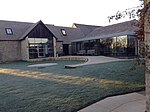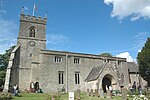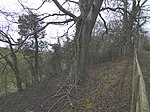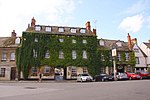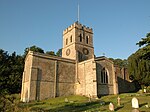River Dorn

The River Dorn is a river in Oxfordshire, England, that is a tributary of the River Glyme. The river rises from the limestone uplands of north Oxfordshire, about 1.5 miles (2.4 km) east of Chipping Norton (51.9587°N 1.4823°W / 51.9587; -1.4823 (River Dorn (source))), and flows southeast past Little Tew; through Sandford St. Martin, where it forms part of Sandford Park's gardens; and through the Bartons: Westcott Barton, Middle Barton, where Cockley Brook joins it, and Steeple Barton — before it joins the River Glyme just east of Wootton (51.8710°N 1.3554°W / 51.8710; -1.3554 (River Dorn (mouth))). The River Dorn flows though the Soho Farmhouse members club, part of Soho House (club) between Little Tew and Stanford St Martin.
Excerpt from the Wikipedia article River Dorn (License: CC BY-SA 3.0, Authors, Images).River Dorn
Milford Road, West Oxfordshire Wootton
Geographical coordinates (GPS) Address Nearby Places Show on map
Geographical coordinates (GPS)
| Latitude | Longitude |
|---|---|
| N 51.871 ° | E -1.3554 ° |
Address
Milford Road
Milford Road
OX20 1EW West Oxfordshire, Wootton
England, United Kingdom
Open on Google Maps
